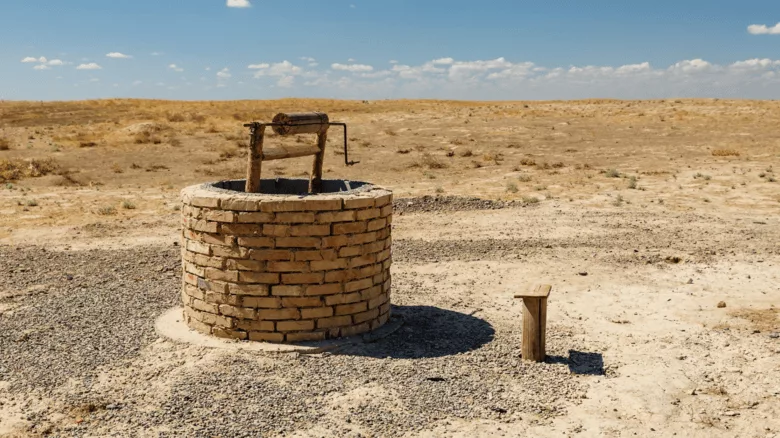The State of Water Well Drilling
A Perfect Storm of Supply, Demand, and Workforce Shortages

Image from Mikhail Priakhin via Getty Images
If you’re a homeowner or business owner looking to drill a well, you’ve probably noticed—the price has never been higher. Across the country, especially in rural areas, the cost of well drilling has shot up, leaving a lot of people wondering what's going on.
It comes down to a mix of factors—higher material costs, skyrocketing demand, and fewer licensed well drillers to do the job. A lot has changed over the past 25 years.
One of the biggest contributors to the price hike is the cost of materials. Steel, PVC piping, support trucks, fuel, fluids, bits— all critical components in well construction—have seen sharp increases in price. Take steel, for example; it’s been all over the place thanks to supply chain issues, tariffs, and global demand. And then there’s diesel, which powers the massive rigs used for drilling. Its price keeps going up and down, making things even more expensive for well drilling companies. All of this adds up to higher costs for anyone needing a well.
According to data from HomeGuide, drilling a residential water well costs between $25 to $65 per foot, depending on factors like depth and location. This means a 150-foot well could cost between $3,750 and $9,750, not including additional expenses for pumps, casing, and other necessary equipment.
More people are moving to rural areas, and off-grid living is more popular than ever, which means the demand for private wells has skyrocketed. On top of that, a lot of older wells are wearing out, so more homeowners need repairs or full replacements. Severe droughts in various regions have also forced property owners to drill deeper wells, further driving up costs.
"Drilling a well can be a worthwhile investment for homeowners looking for a reliable water source," notes a recent article from Leaf Home. "In 2024, the costs for drilling a well range from $3,000 to $15,000, depending on various factors such as location, well depth, and geological conditions."
A Shortage of Skilled Well Drillers
Another major factor is the declining number of licensed well drillers. The profession is aging, and fewer young workers are entering the trade. Strict licensing requirements, long hours, and physically demanding labor make it a tough field to break into. Many experienced drillers are retiring, and there simply aren’t enough new workers to replace them.
A report by Stanley Black & Decker highlights this issue: "The skilled labor shortage is one of the biggest challenges facing the U.S. economy, with 650,000 open jobs in the construction industry alone." This shortage extends to well drilling professionals, leading to longer wait times and higher labor costs for those seeking well services. 25 years ago, drilling a well was significantly more affordable. Equipment costs were lower, regulations were less stringent, and the workforce was larger. But with economic shifts, climate change, and technological advancements, the industry looks very different today.
For homeowners, this means longer wait times and significantly higher prices. In some cases, the cost of drilling a new well has doubled or even tripled compared to just a decade ago.
"The drilling industry as a whole has changed. Many of the small operations have shut down, and there are fewer and fewer well drillers to service an increasingly high demand. The reason a lot of companies have shut down is for years they could not keep up with the increasing prices and kept their prices low. By doing so, they couldn't maintain their equipment or stay in business," said Jonathan Jackson owner at J.F.S. Well Drilling.
So, what’s the solution? Some states are working to incentivize younger workers to enter the well drilling industry, while others are investing in alternative water solutions. As the industry continues to evolve, one thing is certain—water remains a necessity, and the price of accessing it isn’t going down anytime soon.
Looking for a reprint of this article?
From high-res PDFs to custom plaques, order your copy today!




